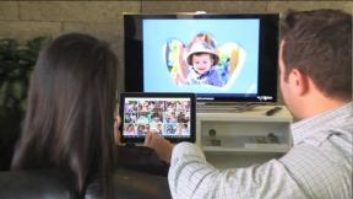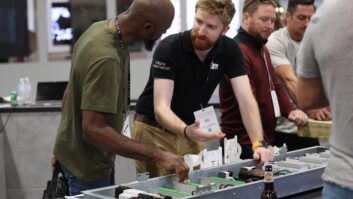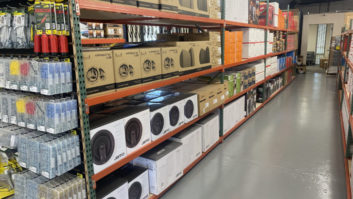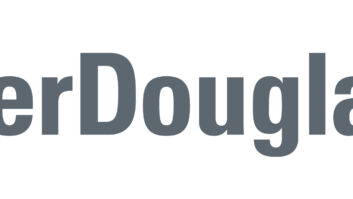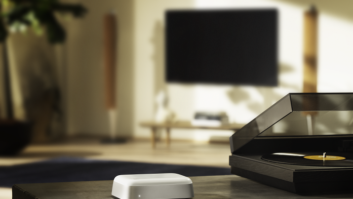Orlando, Fla. –
Connectivity is now where HDTV was in 2001 and independent retailers “need to
embrace it … and take advantage of these new opportunities.”
That is the view
of Jim Ristow, executive VP of Home Entertainment Source (HES), the A/V
specialty division of the BrandSource, which he expressed on Sunday morning at
the group’s Summit being held through Tuesday at the Marriott World Center
Resort, here.
Independent
retailers need to “diversify” into new product categories and embrace change,
such as the “250 million Trojan horses” — tablet PCs and smartphones — that
they can use to connect their customers to new or more robust connected home
systems. HES members must be “integrators that sell A/V” and that products that
are “commodities are not the solution.”
Ristow outlined an
economic environment where the stock market has “doubled in value in the past
two years,” the feared double-dip recession “probably won’t happen,” and that
other economic indicators show that 2011 will be one of “slow, steady and
building” progress.
But Ristow said
that HDTV can no longer be relied on as the only driver of independent
retailers’ businesses.
“During the 2010
CES the only thing discussed was 3DTV, and sales weren’t robust … the big-box
retailers didn’t know how to sell it and there wasn’t enough content,” Ristow
said.
At CES this
January all the talk and product news was about “connectivity, wireless
capabilities and content.”
Ristow confirmed
statistics from the Consumer Electronics Association (CEA) what his members now
know only too well — HDTV is now a mature category and the sales forecast
“looks scary.”
He showed that
HDTV sales peaked in 2008 and that average selling prices (ASPs) have been down
in double digits since then, meaning, in effect, “we have to sell 25 percent
more units to get the same dollars we got the previous year.”
Ristow noted that
independents must take “a new approach” and that profitability can’t just be on
“each piece of hardware” which is getting smaller, but the “total profit on
each project.”
So Ristow cited
existing and new categories that independent retailers can emphasize and take
advantage of in the new era of connectivity.
On the established
side of the business, home audio ASPs are up 8 percent in the past year,
according to CEA, with revenue up 27 percent due in part to 3DTV. Multi-room
A/V systems, which were down dramatically two years ago, are on a double-digit
growth curve now, and wireless systems are up 30 percent, all strong categories
for HES-type dealers.
Ristow stressed that
new categories that many dealers don’t currently carry — smartphones and
tablet PCs — will be keys to future growth.
He noted, again
from CEA stats, that an estimated 200 million smartphones will be sold in the
U.S. from 2008 until the end of this year and that “17 million tablet PCs were
sold in 2010, and it is estimated to double in 2011, and not all of them will
be sold by Apple.”
Ristow noted that
tablets can “provide solutions for all of your customers” if you work with them
on it. He reminded HES members: “iPod was supposed to be a major problem when
it was introduced, but now how much of our business is now based on the
distribution of digital media? How much business do we do off of this?”
He said the 250
million consumers who have smartphones and tablets “provide us with a huge
opportunity. Only 2 percent are using those devices for full home audio or
lighting,” adding, “In terms of a product lifecycle, connectivity today is
where HDTV was in 2001.”
Eventually, HDTV
“went from elite to general consumers,” and he said that connectivity “is now
in the high end. If we embrace it, and we must, there is a major opportunity
for us.”
When consumers
think of home control and connectivity, they think of “an easy user interface,
which is sexy, cool, easy to use and they can show their friends.”
The devices are
“not just phones, for email or for GPS. They are home controllers. And it
becomes personal. I can control it, or my wife, my son, my daughter with their
smartphone or tablet.”
With content
“coming from the cloud with Netflix, Google TV and a litany of platforms,”
there is a new entertainment ecosystem that “consumers can get for $16 a
month.”
Ristow said a few
years ago the consumer, and independents, knew the A/V ecosystem was “a TV and
home theater, DVD and CD. They might have a computer but it was not tied” into
the A/V system.
The entertainment
ecosystem for the home is quickly becoming “tablets, smartphones and PCs, where
they want their content to move when they want it.”
He said HES
members will “continue to pull a lot of wire. That will not go away,” but
dealers may now be installing “multiple access points.” It may just be 4G
wireless coming into the house but HES-type dealers can and should be the group
to deliver that experience.
Ristow recited a
list of products, services and types of consumers that HES members are and
should be serving: Skype which “is used by young people and grandparents the
most”; lighting; HVAC; media streaming; shades/blinds; home security; content
delivery; wireless zones and wireless speaker systems, “which are all being
accepted by our customers and mainstream consumers.”
And Ristow
suggested an emphasis on headphones, which have now become higher-ticketed
fashion items “that are purchased between every six to 18 months.”
He noted, “We are
A/V specialists that integrate and integrators that are A/V specialists,” that
can understand and “easily demonstrate” the many aspects of the new connected
marketplace that independent A/V retailers now compete in.




